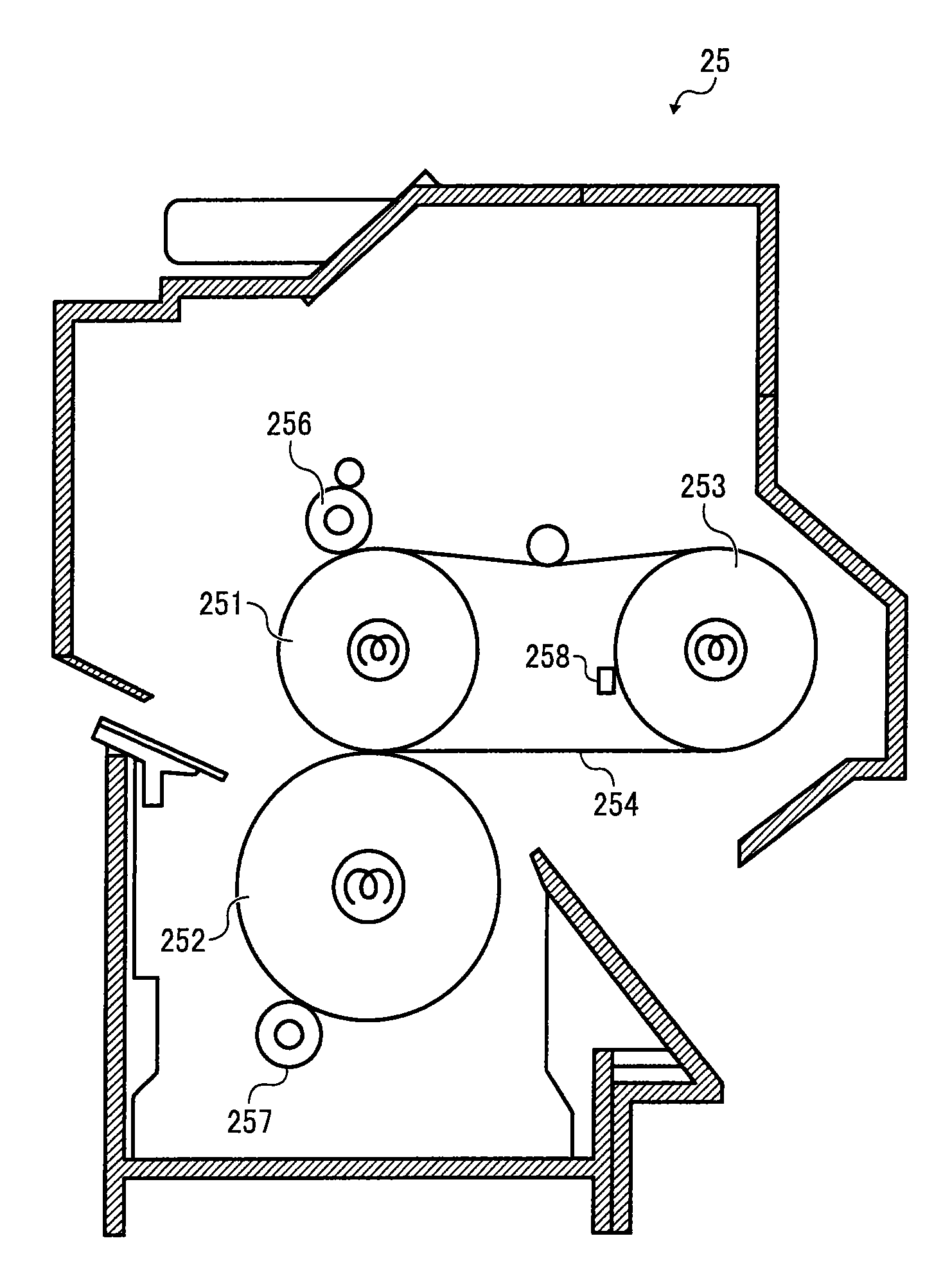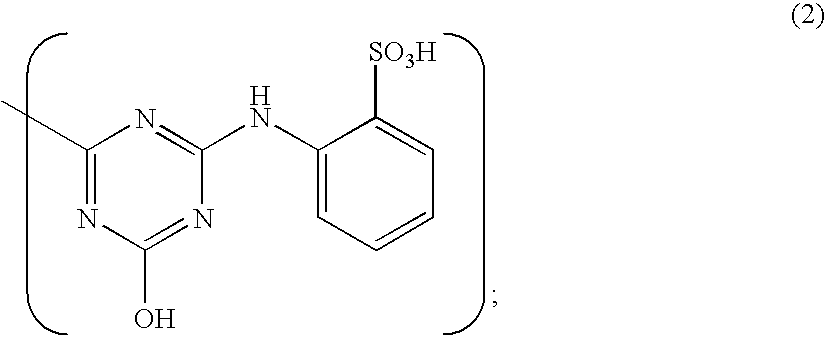Magenta toner and developer
a technology of magenta toner and developer, which is applied in the field of magenta toner and magenta developer, can solve the problems of brittle melt-kneaded mixture, extremely low yield, narrow raw material range, etc., and achieve the effects of good combination of offset resistance, chargeability and storage stability, without adversely affecting the environment and the human body
- Summary
- Abstract
- Description
- Claims
- Application Information
AI Technical Summary
Benefits of technology
Problems solved by technology
Method used
Image
Examples
example 1
Toner Example 1
Preparation of Pigment Dispersion
[0295]A vessel equipped with a stirrer is charged with 250 parts of the unmodified polyester resin A and 1,625 parts of ethyl acetate. The mixture is agitated so that the unmodified polyester resin A is dissolved in the ethyl acetate.
[0296]Next, 250 parts of the quinacridone pigment A are added to the vessel and the mixture is agitated for 1 hour.
[0297]The resulting pigment mixture is subjected to a dispersion treatment using a bead mill (ULTRAVISCOMILL (trademark) from Aimex Co., Ltd.) under the following conditions.[0298]Liquid feeding speed: 1 kg / hour[0299]Peripheral speed of disc: 8 m / sec[0300]Dispersion media: zirconia beads with a diameter of 0.3 mm[0301]Filling factor of beads: 80% by volume[0302]Repeat number of dispersing operation: 5 times (5 passes)
Thus, a pigment dispersion A is prepared.
(Preparation of Wax Dispersion)
[0303]A reaction vessel equipped with a stirrer and a thermometer is charged with 378 parts of the unmodifi...
examples 2-6
Toner Examples 2-6
[0326]The procedure for preparing the toner in Example 1 is repeated except for replacing the quinacridone pigment A with pigments described in Table 1. Thus, toners 2 to 6 are prepared.
Comparative Toner Examples 1-5
[0327]The procedure for preparing the toner in Example 1 is repeated except for replacing the quinacridone pigment A with pigments described in Table 1. Thus, comparative toners 7 to 11 are prepared.
[0328]
TABLE 1Pigment Mixing Ratio (parts)QuinacridoneNaphtholTonerFormulaPigmentPigmentPigmentNo.(1)Red 122Violet 19TotalRed 269Example 11500595Example 2235003565Example 331.2530.75595Example 44311595Example 558.751016.253565Example 66214103565Comparative70.5000.599.5Example 1Comparative855005545Example 2Comparative9010001000Example 3Comparative100000100Example 4Comparative1102002080Example 5
Evaluations
[0329]Each of the toners prepared above is set in a tandem image forming apparatus (IMAGIO NEO 450 from Ricoh Co., Ltd.). FIGURE is a schematic view illustrat...
PUM
| Property | Measurement | Unit |
|---|---|---|
| particle diameter | aaaaa | aaaaa |
| acid value | aaaaa | aaaaa |
| glass transition temperature | aaaaa | aaaaa |
Abstract
Description
Claims
Application Information
 Login to View More
Login to View More - R&D
- Intellectual Property
- Life Sciences
- Materials
- Tech Scout
- Unparalleled Data Quality
- Higher Quality Content
- 60% Fewer Hallucinations
Browse by: Latest US Patents, China's latest patents, Technical Efficacy Thesaurus, Application Domain, Technology Topic, Popular Technical Reports.
© 2025 PatSnap. All rights reserved.Legal|Privacy policy|Modern Slavery Act Transparency Statement|Sitemap|About US| Contact US: help@patsnap.com



